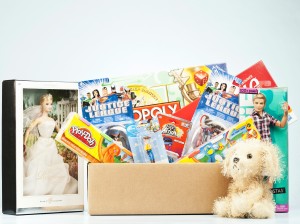Before you buy toys for the children in your life this holiday season, the Public Interest Research Group (PIRG) — and doctors — caution you to keep some important things in mind.
PIRG has released its annual “Trouble in Toyland” report, which evaluates many children’s toys that are being sold during the holiday season. As always, there were toys that PIRG tested and concluded did not meet safety standards of the United States Consumer Product Safety Commission, or that had other problems that make the toys dangerous.
Choking and Other Hazards from Swallowing
If you are buying gifts for small children, be especially wary of small parts that could pose choking hazards. The CPSC has banned the sale of toys with small parts or those that easily break into small pieces to children under 3, but this year’s PIRG study nonetheless found such toys being sold for children under 3.
Experts want parents to know that if an object can fit through a toilet paper roll, it can pose a choking hazard.
The 2014 PIRG report also found several toys containing small parts, marketed to older children; but with warning labels on the packaging so small that it is hard to read that the toy is a choking hazard.
Some toys, such as some small balls, may not carry a choking hazard warning at all. Other toys, like realistic-looking plastic foods such as hot dogs, may include a choking hazard warning, but they may be especially tempting for small children to swallow because they look like real food.
So, if you have older children as well as small ones, it is important to give thought to whether the toys you buy for your older kids could be choking hazards for the younger children.
Balloons: Many grown-ups may not think of this, but balloons are actually the #1 choking hazard for children, as they can be easily inhaled when the child tries to inflate them, and they get stuck in the throat. Balloons result in more choking deaths in children than any other toy or children’s product, according to PIRG. The CPSC advises that balloons not be marketed to children younger than 8.
Magnets: Magnets are fascinating to children, but it can be extremely dangerous or even fatal if two or more powerful magnets are swallowed. The attractive forces will bring them together inside the GI tract, causing perforation to intestinal walls.
Batteries: Many children’s toys require batteries, of course; but bear in mind that batteries are a choking hazard for babies and small children, and even pre-teens have been known to swallow them. The highest risk is for children under 4.
Batteries also pose dangers that most people don’t know about. Cylindrical, tube-shaped batteries can be swallowed by children, placed inside noses, or they can rupture once swallowed, releasing dangerous acids and requiring emergency treatment. They can also cause tissue death from the pressure applied by the battery.
But the newer button-shaped, round, flat models are of special concern to doctors. These are usually the ones that have been swallowed when children are taken to emergency rooms or to personal doctors after swallowing batteries.
Button-shaped batteries often get stuck in the windpipe; when saliva falls on the battery, a small electrical charge is released; this electricity causes the battery to burn through tissue and blood vessels, potentially requiring surgery or leading to internal bleeding and death.
The Centers for Disease Control and Prevention warn that button batteries can burn through esophageal tissue in a matter of two hours; therefore, it is essential to take a child to a doctor right away when it is suspected that the child may have swallowed a button battery (or any other type of battery). Additionally, even once a battery is removed from the child’s system, the acids may continue to burn tissue, causing internal, possibly fatal bleeding days or weeks after the battery was swallowed and removed.
Symptoms seen in children who have swallowed batteries include: vomiting, abdominal pain, fever, diarrhea, difficulty breathing, difficulty swallowing and coughing.
Parents are reminded that many non-toy products include tube or button batteries, including watches, night lights, flashing jewelry, talking and singing books, singing greeting cards, hearing aids, TV remotes and flashlights.
Thousands of American children wind up in emergency rooms each year after swallowing batteries.
Chemicals in Toys
A few of the toys PIRG tested this year had higher levels of toxic chemicals like lead and phthalates, both used to soften plastics, than the levels allowed by American regulatory agencies. Violations were found in toys sold at 99-cent stores, but also at big-box stores, online and in some top brands. (Visit uspirg.org to download full report.)
Noisy Toys and Harm to Children’s Ears
A few toys were found to exceed limits on decibel output; parents are advised that toys that make loud noises aren’t just annoying to parents … they may also harm a child’s hearing.
To check if a toy your child owns or one you’re planning to buy has been recalled, check the government’s recall website, Recalls.gov
Toy-related injuries have risen in recent years, according to a new study by the Center for Injury Research and Policy at Nationwide Children’s Hospital. Much of the increase is due to injuries from riding foot-powered scooters. Safety experts recommend that parents restrict use of riding toys, including tricycles and bicycles, to dry, flat ground, away from traffic; children under 8 should be closely supervised by an adult. Riders should also wear helmets, knee pads and elbow pads.
By Eirian Hallinan

Leave a Reply